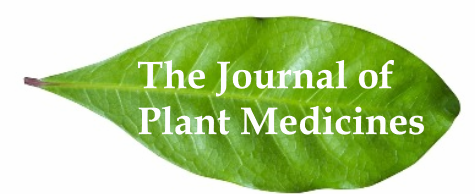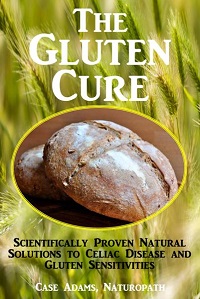Quercetin Halts Cancer Growth Including Leukemia
One of the reasons why many raw and organic foods are so healthy is because they contain a constituent called quercetin. Quercetin is a common constituent in a number of vegetables, citrus and berries. Research has found that quercetin fights the growth of cancers, including leukemia.
In this article
Quercetin and cancer
Recently a number of studies have confirmed that quercetin will halt the growth of cancer cells.
Rutgers University researchers found that quercetin along with other cranberry flavinoids increased the killing of prostate cancer cells.
Research from Canada’s Dalhousie University found that quercetin stimulated the killing of liver cancer cells.
Researchers from Korea’s Chonbuk National University also found quercetin inhibited the growth of liver cancer cells.
Research from China’s Zhejiang University found that quercetin inhibited the growth of breast cancer cells.
Research from Germany’s Biochemical Institute for Environmental Carcinogens found that quercetin affected liver cell pathways and helped prevent DNA degradation.
The commonality among these studies is something called anti-proliferation: Quercetin stops cancer cells from growing into larger tumors.
These and many others have resulted in similar findings: Quercetin is nature’s anticancer biochemical.
Quercetin also halts leukemia growth
Medical scientists have also established that quercetin halts the growth of leukemia cells. Leukemia is a type of cancer that tends to originate among the bone marrow where red blood cells are produced.
The research, from Turkey’s Yuzuncu Yil University School of Medicine, worked with the K562 cell line – a human leukemia cancer cell line. They tested several doses of quercetin derived from vegetable sources against the growth of the leukemia cells.
The research found that the quercetin was “toxic” to the leukemia cells – imparting cell death or apoptosis.
But only when doses were above 100 μM (micrometer) in solution.
Below the 100 μM level, the quercetin actually encouraged the growth and viability of the leukemia cells. This was qualified by the researchers as a “low dose” of quercetin.
Quercetin absorption
The good news is that most of these studies showed a dose-dependent benefit. This means the higher the dose of quercetin, the greater the benefit.
But one issue relates to a potential problem with quercetin: The doses necessary to affect cancer cell growth need to be significant.
But of course their focus relates to isolated quercetin. What these researchers often don’t focus upon is the fact that those foods that contain quercetin also typically contain many other polyphenols and flavinoids. Some also contain anticancer flavones and catechins. These are also anticancer, and the reality is, these anticancer biochemicals work synergistically.
Yet this still means that a minimal amount of quercetin-rich foods each day probably won’t help prevent cancer or leukemia very much. Generous helpings of quercetin-rich foods would be the trick for the prevention of leukemia and other cancers.
And this has been established among large population studies – some done by Harvard researchers – showing diets rich in fruits and vegetables reduce the risk of cancers.
What is quercetin and what foods are high in quercetin?
Quercetin is a flavonoid contained in number of vegetables and fruits. Research has found it to be one of the strongest antioxidants available from our food supply. Outside of the ones mentioned above, other studies have found quercetin to be anticancer. Still others have shown it can protect the nerve cells from damage (neuroprotective).
Many of these effects require a consistent intake of quercetin foods over time.
Good sources of quercetin among common foods include onions, watercress, kale, parsley, peppers, cranberry, bee pollen, buckwheat, lingonberry, plums, sweet potatoes, garlic, blueberries, apples, ginger, broccoli, tomatoes, citrus fruits, and a number of others.
Organic foods contain more quercetin
I noted above that organic foods will likely contain significantly more quercetin than conventionally grown foods. The evidence comes from a 2007 study from the University of California-Davis.
In this study, researchers tested dried tomato samples for ten years, between 1994 and 2004. The tomatoes were grown in controlled conditions and the researchers tested each planting’s average quercetin levels, as well as another important anticancer flavonoid, kaempferol.
On average, the organically-grown tomatoes had 79% higher quercetin levels than the conventionally-grown tomatoes. The organically-grown tomatoes also had 97% higher kaempferol levels than the conventional tomatoes.
But what is even more notable about this study is that the longer the soil had been organically farmed, the higher the quercetin levels. They also found that higher levels of organic matter in the soil related directly to higher quercetin levels.
In a separate study from UC-Davis, a three year study also found organic tomatoes and bell peppers had higher quercetin levels. And a new study from Poland confirms higher quercetin levels in organic versus non-organic tomatoes.
Isn’t it ironic that while pesticides and herbicides have been linked with causing cancer, organic foods have been shown to contain more cancer-fighting potential in the form of quercetin and other flavonoids such as kaempferol?
REFERENCES:
Waizenegger J, Lenze D, Luckert C, Seidel A, Lampen A, Hessel S. Dose-dependent induction of signaling pathways by the flavonoid quercetin in human primary hepatocytes: a transcriptomic study. Mol Nutr Food Res. 2015 Mar 19. doi: 10.1002/mnfr.201400764.
Wang Y, Han A, Chen E, Singh RK, Chichester CO, Moore RG, Singh AP, Vorsa N. Cranberry flavonoids and quercetin aglycone induce cytotoxicity and cell cycle arrest and increase cisplatin sensitivity in ovarian cancer cells. Int J Oncol. 2015 Mar 17. doi: 10.3892/ijo.2015.2931.
Sudan S, Rupasinghe HV. Antiproliferative activity of esters of quercetin-3-O-glucoside in hepatocellular carcinoma HepG2 cells. Exp Biol Med (Maywood). 2015 Feb 13. pii: 1535370215570828.
He HL, Ji LJ, Li QZ, Zhang R, Huang JM, Li G. [Effect of Quercetin on Doxorubicin-induced Expression of MDR1 Gene in HL-60 Cells]. Zhongguo Shi Yan Xue Ye Xue Za Zhi. 2015 Jan;23(1):70-6. doi: 10.7534/j.issn.1009-2137.2015.01.014.
Lee RH, Cho JH, Jeon YJ, Bang W, Cho JJ, Choi NJ, Seo KS, Shim JH, Chae JI. Quercetin Induces Antiproliferative Activity Against Human Hepatocellular Carcinoma (HepG2) Cells by Suppressing Specificity Protein 1 (Sp1). Drug Dev Res. 2015 Jan 25. doi: 10.1002/ddr.21235.
Tao SF, He HF, Chen Q. Quercetin inhibits proliferation and invasion acts by up-regulating miR-146a in human breast cancer cells. Mol Cell Biochem. 2015 Apr;402(1-2):93-100. doi: 10.1007/s11010-014-2317-7.
Akan Z, Garip AI. Antioxidants May Protect Cancer Cells from Apoptosis Signals and Enhance Cell Viability. Asian Pac J Cancer Prev. 2013;14(8):4611-4614.
Mitchell AE, Hong YJ, Koh E, Barrett DM, Bryant DE, Denison RF, Kaffka S. Ten-year comparison of the influence of organic and conventional crop management practices on the content of flavonoids in tomatoes. J Agric Food Chem. 2007 Jul 25;55(15):6154-9.
Chassy AW, Bui L, Renaud EN, Van Horn M, Mitchell AE. Three-year comparison of the content of antioxidant microconstituents and several quality characteristics in organic and conventionally managed tomatoes and bell peppers. J Agric Food Chem. 2006 Oct 18;54(21):8244-52.
Dajas F. Life or death: neuroprotective and anticancer effects of quercetin. J Ethnopharmacol. 2012 Sep 28;143(2):383-96. doi: 10.1016/j.jep.2012.07.005.































